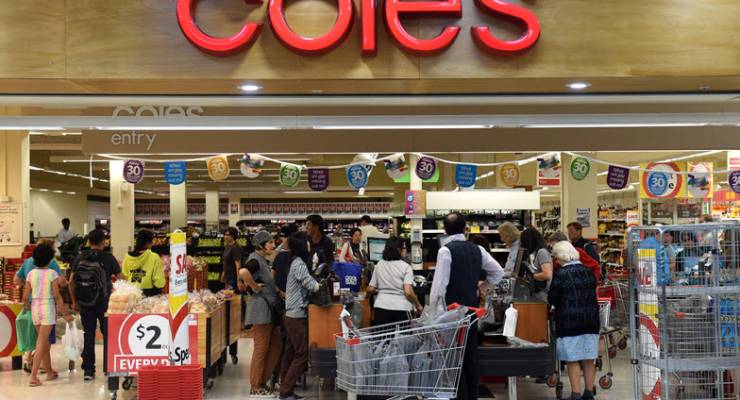
Long ago, Coles and Myer were star-crossed lovers. Now, after long and winding paths, they’re both single again, and more than a little bruised by life.
The two retailers were a single entity between 1985 and 2006, but now find themselves floating round the ASX without a conglomerate to keep them warm at night. They were Australia’s largest corporation — do they ever look back on that time and dream of what might happen if they gave it another shot?
Both retailers have uncertain prospects. Might the whole be greater than the sum of its parts? The idea is fanciful — strapping a rock to a brick doesn’t make either more buoyant — but it is fun to think about.
Synergies
Corporations are often more diversified than we think, and that is especially true of Coles.
Coles includes the supermarket chain; Flybuys; four bottle-shop brands, including Liquorland; Coles financial services (which sells insurance, personal loans, etc,); and a range of pubs. Myer is 62 department stores, the Myer One card, and a few clothing brands — Marcs, David Lawrence, and Sass and Bide.
Are there synergies there? Are you kidding? A good investment banker looking to find fees on a deal can find synergies anywhere.
A lot of history
When it was proposed in 1985, the Coles Myer merger was the largest deal in Australian history. But what started out as exciting in the 1980s was spoiled milk by the mid-2000s. (Here’s how Crikey reported the demerger.)

Myer’s 2006 sale fetched a nice price for Coles — it was sold to a consortium that paid $1.4 billion. Not too bad considering Coles had paid $1 billion for Myer and Target combined. (Coles kept Target in 2006.)
The price was amazing, considering Myer had not thrived under Coles stewardship. That chart in the news story above shows Myer winning 7% of Australia’s total retail sales in 1985. Comparing Myer’s 2018 revenues of $3.1 billion to Australia’s $318 billion retail trade over the last 12 months (per ABS data), we can calculate its current share at 1%.
Our hypothetical merger would not set any records this time, but neither would it have any trouble at the ACCC, that’s for sure.
Reasons to do it
One upside of any re-merger is that it would be far cheaper to buy Myer now. In 2018, Myer’s market capitalisation is just $370 million. Any suitor might have to pay a bit above that to buy the whole company, but it seems unlikely Myer would cost even half the $1 billion price paid in 1985.
Buying Myer would be a snap for an entity that had confidence in how to run a retailer. After all, despite being in the dog house with the markets, Myer is not actually making operating losses. In the most recent year it accrued $33 million in profit (excluding asset write-downs). That is down on previous years, but it’s not negative. Not yet, anyway.
Supermarketing for fun and profit
What this story is really about is how much retail has changed. Coles and Myer find themselves alone on the share market because of the winds of change blowing through the industry.
Online shopping has been a factor. It has not killed as much as was feared — for a while, book shops and bike shops looked to be moments away from becoming extinct. But internet shopping doesn’t hurt supermarkets as much as it hurts other types of shop. Running a supermarket can still be profitable.
The main supermarkets that closed down recently were Bilo and Thomas Dux. Bilo wasn’t cheap enough to compete with Aldi, and Thomas Dux aimed far too luxe. The environment was screaming out for a brilliant discounter and Aldi took over this country faster than the cane toad.
The remaining supermarkets have adapted to the changes. They have cut prices in response to Aldi, and they now run a fairly decent online shopping experience. Even IGA is still up and running.
But the changing world of retail has been much harder on department stores. Anything you don’t have to buy fresh — and don’t have to try on — can be bought online. Myer’s pricey reputation hasn’t helped but remember that Big W and Target are also both suffering mightily. It’s a tough time to be a department store.
Department stores have faced their own equivalent of Aldi, too. The foreign competition that worries the likes of Myer can be found in H&M, Zara and Uniqlo. All the clothes-shopping that goes on in these Swedish, Spanish and Japanese chains takes away from sales at Myer and its old nemesis David Jones. The competition is fierce, and it is not over yet.
In retail, change is relentless and it crushes dreams of rekindled romance. So give up on thoughts of Coles Myer reforming and granting everybody shareholder discount cards once again. Just as likely is that they are each sucked up into a bloodthirsty private equity group, and are barely heard from again.








Who fucking cares?
If we’re lucky it will turn into another typical dinosaur omnishambles and they’ll all lose bigly.